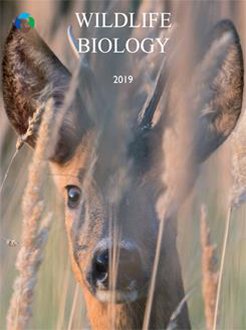Effective conservation of group-living forest wildlife requires information on how forest age moderates population parameters. Relationships between forest age and demographics can guide long-term management for wildlife populations that are expanding in relatively young second-growth forests in response to ongoing habitat management. We examined how forest age moderates effects of group density on long-term trends in group size and fledgling production in the endangered red-cockaded woodpecker Dryobates borealis (RCW) on the Savannah River Site, SC (SRS). We used 32 years of RCW monitoring data and generalized additive models to: 1) model long-term changes in average RCW group size and fledgling production; and 2) model effects of neighboring group density and neighboring group sizes across a gradient of forest age within 800 m of a group's cavity tree cluster. Average fledgling production oscillated over 2–3 year periods, but longer term evaluation indicated oscillations dampened and average fledgling production slightly decreased over time. Average group size fluctuated abruptly over 2–3 year periods from 1985 to 1994, but longer term evaluation indicated a general increase in group sizes from 1985 to 1994, followed by declines from 1995 to 2007, and a steady increase after 2010. Average fledgling production increased in response to neighboring group density but decreased as neighboring group sizes increased. In contrast, average group sizes increased in response to greater neighboring group density and neighboring group sizes. Stand age did not affect these relationships. Collectively, these results suggest forest age does not directly moderate effects of neighboring group density or group sizes on long-term average group size and fledgling production in the SRS RCW population. Although forest structure has been linked to increased RCW group sizes and productivity, our results suggest that with ongoing habitat management, long-term changes in group size and fledgling production will be driven primarily by group density conditions rather than changing forest age.
How to translate text using browser tools
5 December 2019
Neighboring group density is more important than forest stand age to a threatened social woodpecker population
James E. Garabedian,
Christopher E. Moorman,
M. Nils Peterson,
John C. Kilgo

Wildlife Biology
Vol. 2019 • No. 1
2019
Vol. 2019 • No. 1
2019
cooperative breeder
demography
density dependence
population dynamics
Red-cockaded Woodpecker





